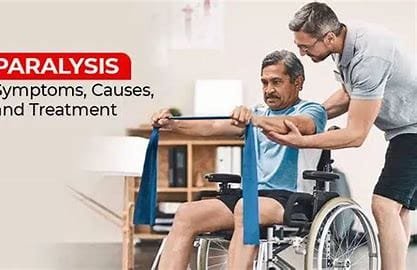Paralysis is one of the medical conditions afflicting millions of people throughout the world. It is where the person has lost his or her ability to control moving one or more muscles in his or her body due to damage to the nervous system. The impacts of paralysis are very far reaching to such an extent that they affect the physical attributes, emotional and social structures, as well as economic life processes. This article discusses different dimensions of paralysis and its significant effects on human life.

Types of Paralysis
Paralysis can be mainly classified into types according to which part of the body is paralyzed and to what extent the movement has been lost:
Partial Paralysis: Also termed paresis, this type is characterized by reduced strength in the muscles, but still there are some movements allowed.
Total paralysis: The area or areas affected are totally paralyzed, as with quadriplegia (all four limbs) and paraplegia (the lower half of the body).
Localized Paralysis: Affected to a specific region of the body and can sometimes be localized to an organ, such as in the case of Bell’s palsy when it affects the muscles of the face.
Generalized Paralysis: Involves a number of regions that can lead to a much greater loss of activity and motility.
Causes of Paralysis
Generally, the causes of paralysis are as broad as:
Neurological Conditions: The diseases that cause these conditions include but are not limited to multiple sclerosis, amyotrophic lateral sclerosis (ALS), and Guillain-Barré syndrome.
Injury: Some spinal cord injuries result from accidents, falls, violence, or other trauma, cutting off the communication of the brain with the body.
Stroke: A stroke can damage areas of the brain for controllable movement, thus causing paralysis on one side of the body.
Infections: polio and other infections cause paralysis in human beings through the disruption of the nervous system.
Physical Aftermath
Most of the immediate and observable physical aftermaths of paralysis have to do with mobility. Such disabilities necessitate that a person always depend on using wheelchairs or prosthetics to assist them in moving about. Moreover, paralysis restricts the control over daily activities such as dressing, eating, and hygiene, among others, a situation that worsens and makes them entirely dependent on caregivers or family members.
In addition, paralysis could lead to secondary medical issues that include:
Muscle wasting: Inability to move can weaken muscles and shrink in size.
Pressure Sores: Immobility for a long time can cause ulcers when the skin breaks due to pressure.
Respiratory Complications: Paralysis of the chest wall can affect breathing and induce infections.
Circulatory Complications: Limited movement can lead to blood clots and cardiovascular diseases, among others.
Emotional and Psychological Impact

The psychological and emotional impacts of paralysis are as severe as the physical ones. Many patients feel a reclusive mix of emotions ranging from grief to frustration, anger, and anxiety. The suffering associated with the loss of independence, coupled with changes in self-image, can also lead to effects of isolation and depression.
Support from mental health professionals, peer support groups, and family can provide a buffer against such challenges. Many people draw their strength through adaptive strategies, which focus on what one can do rather than what cannot be done.
Social Implications
Social life can be changed by paralysis in many ways. Perhaps withdrawal from social circles may further follow inactivity and participation in what brought along happiness. Family relationships can even change as the caregivers work among them, stressing the relationship.
The other factors, apart from the ones mentioned above, involve physical barriers that restrict paralytic individuals from accessing public spaces and forms of transport. Assumption of a positive stance for improved accessibility and inclusion has been pivotal in helping persons with paralysis continue with their social contacts and integration into their communities.
Economic Impact
The economic costs can be pretty steep. The cost of the medical care, rehabilitation, and assistive technologies would weigh hugely on the person as well as his or her family. Many people do not work once they suffer paralysis and therefore suffer a lost income along with dependence on social services.
With increasing awareness about the need for inclusive workplaces, it becomes possible for employers to sustain support towards people with disabilities. However, the employment rates of people with paralysis are still not so high compared to the others, thereby contributing to their inherent instability of money.
Conclusion
Paralysis refers to a specific medical condition that affects every aspect of a human being’s life. The physical restrictions caused by paralysis are hard, but emotional, social, and economic factors all combine to make the experience complex in general. This allows for an understanding of those impacts, lending sympathy and support for the affected and further advocacy efforts for initiatives designed to enhance accessibility and inclusion. As such, society may strive for better outcomes for its members with paralysis by improving the quality of life and promoting resilience through awareness-raising and advocacy toward resources.




